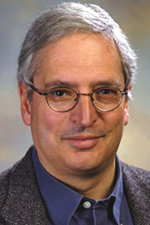 |
| Hugh Rosen |
Last summer, Celgene ($CELG) paid $7.2 billion to get its hands on Receptos and its late-stage autoimmune drug ozanimod, which the big biotech feels has blockbuster commercial potential. And now one of the principal scientists involved in discovering ozanimod is spotlighting a new mechanism of action spurred by the drug that may well inspire new work on next-gen drug models.
Ozanimod is what's called an S1P receptor modulator. The Scripps Research Institute's Hugh Rosen, who was directly involved in proving that an S1P receptor agonist could block inflammatory diseases like Crohn's and rheumatoid arthritis, was intrigued by evidence that ozanimod was often able to work effectively at very low doses. So Rosen and a group of colleagues set out to find out why that was, specifically interested in seeing if a new mechanism of action was involved.
Working with a "tool" molecule in mice, Rosen and his team studied a fluorescently tagged S1PR1 receptor agonists and determined that they targeted immune cells called plasmacytoid dendritic cells, tamping down on the excess production of type-1 interferons, proteins that can spur an autoimmune attack on the body when they operate out of control. An agonist is able to eliminate type-1 interferons by essentially hitching a ride with the S1PR1 receptor as it is dispatched for elimination.
Another insight: Drugs like ozanimod worked against autoimmune disease without stripping mice of their natural defense system, which they proved by infecting the mice with an influenza virus.
"The study uses a proof-of-concept tool compound called CYM-5442," said Rosen, who led the new study with TSRI colleagues professor Michael Oldstone and assistant professor John Teijaro. "With this tool, we show a new, important mechanism in disease that can prevent collateral tissue damage while preserving the protective host response. The findings suggest one could optimize drugs for their ability to suppress this pathway."
The new study was published this week in the Early Edition of the Proceedings of the National Academy of Sciences.
- here's the release
- read the journal abstract